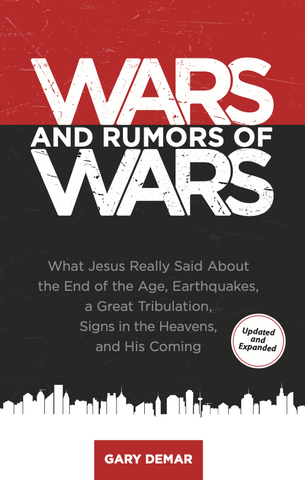Gary answers two listener questions
Matthew 24:3 reads more accurately, “the end of the age” (aiōn), not the “end of the world” (kosmos) as some translations have it. The “end of the age” refers to the expiration of a period of time that specifically applied to the passing away of the Old Covenant era (Dan. 9:24-27; Matt. 15:24; Luke 24:27, 44). The writer of Hebrews described this time as “these last days,” literally, “the end of these days” (Heb. 1:1-2), “the consummation of the ages” (9:26), as they saw “the day drawing near” (10:24). Even the authors of the Left Behind series acknowledge this to be true:
This evidently refers to the days in which they were living, for in their lifetime God had sent His Son to reveal His great love for mankind by dying for our sins. That act of divine mercy spelled the end of the Old Testament sacrificial system, which was being replaced by the new and better covenant made possible by the blood of God’s Son.[1]
Peter wrote that Jesus appeared in “these last times,” literally, “at the end of the times” (1 Pet. 1:20). He further stated that “the end of all things has come near” (1 Pet. 4:7). Paul made the point “the ends of the ages have come” (1 Cor. 10:11). The Old Covenant age was coming to an end and was being made “obsolete” and in the process of disappearing because of the work of Jesus Christ (Heb. 8:13). This resulted in the “age to come” (Matt. 12:32), which incorporated believing Jews and Gentiles into the blessings of the “new covenant in [Jesus’] blood” (Luke 22:20; cf. Jer. 31:31; Acts 10; Rom. 9-11; 1 Cor. 11:25; 2 Cor. 3:6; Eph. 2; Heb. 8:8, 13).
Jesus replaced the sacrificial system of bulls and goats with Himself as the “Lamb of God” (John 1:29), the physical temple with “the temple of His body” (John 2:13-22), a sanctuary built with hands with the “true tabernacle” (Heb. 8:2; 9:11, 24; John 1:14), the earthly, sinful high priest with Himself as the “perfect High Priest” (Heb. 2:17; 3:1; 5:1-10; 7:26- 28), and earthly Jerusalem and Zion with heavenly Jerusalem and Zion (Gal. 4:21-31; Heb. 12:18-24). The “end of the age” refers to the last days of the Old Covenant world that were passing away (1 Cor. 2:6; 1:20). The destruction of the temple was the observable outward sign that the new covenant had dawned.

Wars and Rumors of Wars
There is also a history of skeptics who turn to Bible prophecy and claim Jesus was wrong about the timing of His coming at ‘the end of the age’ and the signs associated with it. A mountain of scholarship shows that the prophecy given by Jesus was fulfilled in exacting detail when He said it would: before the generation of those to whom He was speaking passed away.
Buy NowGary answers two listener questions regarding progressive dispensationalism and the disciples’ question about Jesus’ coming in Matthew 24:3.
Click here for today’s episode
Click here to browse all episodes of The Gary DeMar Podcast
[1] Tim LaHaye and Jerry Jenkins, Are We Living in The Last Days? (Wheaton, IL: Tyndale Publishers, 1999), 17.

